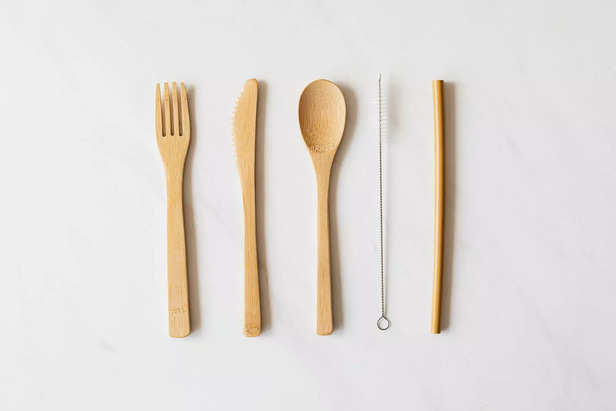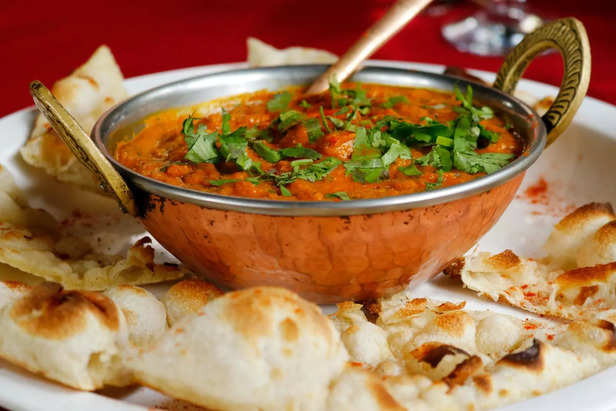The Art of Eating with Hands: Why India Never Needed a Spoon
Riya Kumari | Feb 20, 2025, 23:56 IST
Eating with hands
( Image credit : Pexels )
So there I was, watching my well-meaning but utterly misguided friend struggle with a spoonful of biryani, like a toddler attempting origami. A grain of rice here, a rogue cashew there—it was a full-blown disaster. And that’s when it hit me: why do some people insist on using cutlery when the universe has already given us the perfect tools?
Some things in life are designed to be felt before they are understood. A mother’s touch, the first drop of rain on dry earth, the heat of a flame inches from your skin. Food, too, belongs in this category. It is not just something we consume; it is something we experience. And for centuries, Indians have known that the best way to experience food is with our hands. In the modern world, where efficiency is mistaken for wisdom, cutlery is seen as a mark of refinement. A spoon is clean, structured, predictable. But it is also impersonal. It creates distance between you and what you eat, turning a deeply human act into a mechanical one. A fork will pick up your food, but your hand will understand it.
Long before science confirmed it, our ancestors understood that hands are not just tools—they are extensions of thought. The nerves in our fingers send signals to the brain, assessing temperature, texture, and consistency before the food even touches our lips. This connection is not accidental; it is biological wisdom at work. In Ayurveda, the hand represents the five elements—earth, water, fire, air, and space—each playing a role in digestion and nourishment. To eat with your hands is to acknowledge that food is not just fuel but energy, something that interacts with your body before it becomes a part of it.
But even without invoking Ayurveda, there is a simple truth here: when you touch your food, you are present with it. You do not mindlessly scoop and swallow; you gather, mix, and shape it in a way that engages more than just taste. The experience becomes intimate, rooted in awareness rather than habit.
2. The West Calls It Primitive, But What Is Progress?

It is easy to dismiss something as primitive when you do not understand its depth. The British, in their colonial arrogance, decided that eating with hands was unsophisticated, just as they decided a land with universities older than Oxford was in need of education. And so, the spoon became a symbol—of modernity, of progress, of an idea that Western ways were inherently superior. But here is the question: does progress mean erasing what is old, or does it mean recognizing wisdom in places you did not think to look?
Because when you strip away the labels, what remains is this: eating with hands is not a lack of etiquette. It is a presence of connection. A child instinctively reaches for food with their fingers, not because they have not learned better, but because they have not yet unlearned what is natural.
3. Beyond the Act: What We Are Really Forgetting

The shift from hands to cutlery is not just about food. It mirrors a deeper change—a world moving away from experience and toward efficiency. We have become a people who want things fast, clean, and contained. We eat quickly, often distracted, rarely pausing to taste in the truest sense. The spoon, the fork, the knife—they are not just tools; they are symbols of how we have distanced ourselves from the simplest of pleasures. But when you eat with your hands, something shifts. You slow down. You feel your food. You take what is needed, mix as required, adjust instinctively. There is no rush, no mindless consumption. Just you, your meal, and the moment.
And maybe, in a world where everything is designed to keep us disconnected—from each other, from our roots, from the essence of living—choosing to eat with our hands is more than just a cultural habit. Maybe it is an act of remembering who we are. Because in the end, a spoon may feed you, but your hands will teach you how to eat.

Modern research confirms what tradition has always known—your hands do more than just hold food; they actively enhance the eating experience. The fingertips contain thousands of nerve endings that send signals to the brain, helping it prepare for digestion by assessing temperature, texture, and consistency. This sensory interaction stimulates the vagus nerve, which plays a crucial role in digestion and gut health. Moreover, the natural bacteria on our hands—when clean—help maintain a balanced microbiome, supporting immunity. In contrast, eating with cutlery creates a disconnect, reducing sensory engagement and making eating a passive act rather than an active, mindful experience.
1. The Forgotten Intelligence of Hands
But even without invoking Ayurveda, there is a simple truth here: when you touch your food, you are present with it. You do not mindlessly scoop and swallow; you gather, mix, and shape it in a way that engages more than just taste. The experience becomes intimate, rooted in awareness rather than habit.
2. The West Calls It Primitive, But What Is Progress?

British
( Image credit : Pexels )
It is easy to dismiss something as primitive when you do not understand its depth. The British, in their colonial arrogance, decided that eating with hands was unsophisticated, just as they decided a land with universities older than Oxford was in need of education. And so, the spoon became a symbol—of modernity, of progress, of an idea that Western ways were inherently superior. But here is the question: does progress mean erasing what is old, or does it mean recognizing wisdom in places you did not think to look?
Because when you strip away the labels, what remains is this: eating with hands is not a lack of etiquette. It is a presence of connection. A child instinctively reaches for food with their fingers, not because they have not learned better, but because they have not yet unlearned what is natural.
3. Beyond the Act: What We Are Really Forgetting

Cutlery
( Image credit : Pexels )
The shift from hands to cutlery is not just about food. It mirrors a deeper change—a world moving away from experience and toward efficiency. We have become a people who want things fast, clean, and contained. We eat quickly, often distracted, rarely pausing to taste in the truest sense. The spoon, the fork, the knife—they are not just tools; they are symbols of how we have distanced ourselves from the simplest of pleasures. But when you eat with your hands, something shifts. You slow down. You feel your food. You take what is needed, mix as required, adjust instinctively. There is no rush, no mindless consumption. Just you, your meal, and the moment.
And maybe, in a world where everything is designed to keep us disconnected—from each other, from our roots, from the essence of living—choosing to eat with our hands is more than just a cultural habit. Maybe it is an act of remembering who we are. Because in the end, a spoon may feed you, but your hands will teach you how to eat.
4. The Science Behind Eating with Hands

Food
( Image credit : Pexels )
Modern research confirms what tradition has always known—your hands do more than just hold food; they actively enhance the eating experience. The fingertips contain thousands of nerve endings that send signals to the brain, helping it prepare for digestion by assessing temperature, texture, and consistency. This sensory interaction stimulates the vagus nerve, which plays a crucial role in digestion and gut health. Moreover, the natural bacteria on our hands—when clean—help maintain a balanced microbiome, supporting immunity. In contrast, eating with cutlery creates a disconnect, reducing sensory engagement and making eating a passive act rather than an active, mindful experience.
